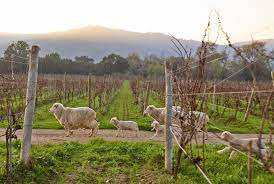Biodynamic Agriculture- Methods & Impact
Introduction
Biodynamic agriculture is considered as first modern organic agriculture developed in 1924 by Rudolf Steiner.
It treats soil fertility, plant growth, and livestock management as ecologically interrelated tasks. It emphasizes spiritual and mystical perspectives and lacks scientific evidences hence also known as pseudoscience.
Bios=life dynamic=energy
Biodynamics practices are mostly as organic approaches, it emphasizes the use of manures and composts and excludes the use of synthetic fertilizers, pesticides and herbicides in agricultural operations. Biodynamic approaches include its treatment of animals, crops, and soil as a single system and the farm is considered an autonomous and living organism that interacts with the environment to build healthy and living soil and produce healthy and nutritious food. It emphasizes the local production and distribution systems, use of traditional and development of new local breeds and varieties. Biodynamic agriculture uses various herbal and mineral additives for compost additives and field sprays.
Biodynamic Method of Farming
Biodynamic agriculture uses management practices that are intended to “restore, maintain and enhance ecological harmony”. The Demeter Association (Biodynamic Federation Demeter International, is the largest certification organization for biodynamic agriculture) recommends that:
- Minimum 10% of the total farm acreage be set aside as a biodiversity preserve. That may include but is not limited to forests, wetlands, riparian corridors, and intentionally planted insectaries. Diversity in crop rotation and perennial planting is required: no annual crop can be planted in the same field for more than two years in succession. Bare tillage year-round is prohibited so land needs to maintain adequate green cover.”
- The Demeter Association also recommends that the individual design of the land “by the farmer, as determined by site conditions, is one of the basic tenets of biodynamic agriculture. This principle emphasizes that humans have a responsibility for the development of their ecological and social environment which goes beyond economic aims and the principles of descriptive ecology.” Crops, livestock, and farmer, and “the entire socioeconomic environment” form a unique interaction, which biodynamic farming tries to “actively shape …through a variety of management practices.
- The prime objective is always to encourage healthy conditions for life”: soil fertility, plant and animal health, and product quality. “The farmer seeks to enhance and support the forces of nature that lead to healthy crops, and rejects farm management practices that damage the environment, soil, plant, animal or human health.
- “Disease and insect control are addressed through botanical species diversity, predator habitat, balanced crop nutrition, and attention to light penetration and airflow.
- Weed control emphasizes prevention, including timing of planting, mulching, and identifying and avoiding the spread of invasive weed species.”

Impacts of Biodynamics Agriculture/Farming
Environmental Impacts
- Soil Environment: As the principles suggest, biodynamic farming uses organic manures/compost and avoid chemical synthetic, it restores organic matter in the soil, increase the microbial population, and thus improve soil health. Biodynamics approaches improve the soil structure, texture and porosity, increase humus-forming bacteria’s activity, promote upright plant growth, nodulations, root penetration, and boost the soil microbial population and earthworm activity. Biodynamically managed soil shows better physical, chemical, and biological properties. Cover crops and crop rotation are both practiced under biodynamic agriculture.
- Aerial & Water Environment: Due to exclusion of synthetic fertilizers, pesticides, herbicides, air and water quality being improved and helps in maintaining biodiversity as well. Biodynamic approaches include its treatment of animals, crops, and soil as a single system and the farm is considered an autonomous and living organism that interacts with the environment to build healthy and living soil and produce healthy and nutritious food.
Social Impacts
- Generally, biodynamically grown foods are nutritionally superior as they contain higher levels of vitamins, minerals, and amino acids. Biodynamic farming methods shows improvement in food quality and human health due to use of organic matter. Society can tend to use on-farm inputs and outputs that is cheaper and better.
Economic Impacts
- Yields potential, however in some horticultural crops has been seen as increased or equal as some studies concluded that yield potentials are equal or better than conventional agriculture. The quality of products concerning nutrition, appearance, and shelf life was also better under biodynamic agriculture. Though BDA lacks scientific evidences.
- BDA is believed to reduces input costs, as most fertilizers, manures and sprays are produced using on-farm resources. Besides, farmers earn more from biodynamics farming product as people prefer to consume them.